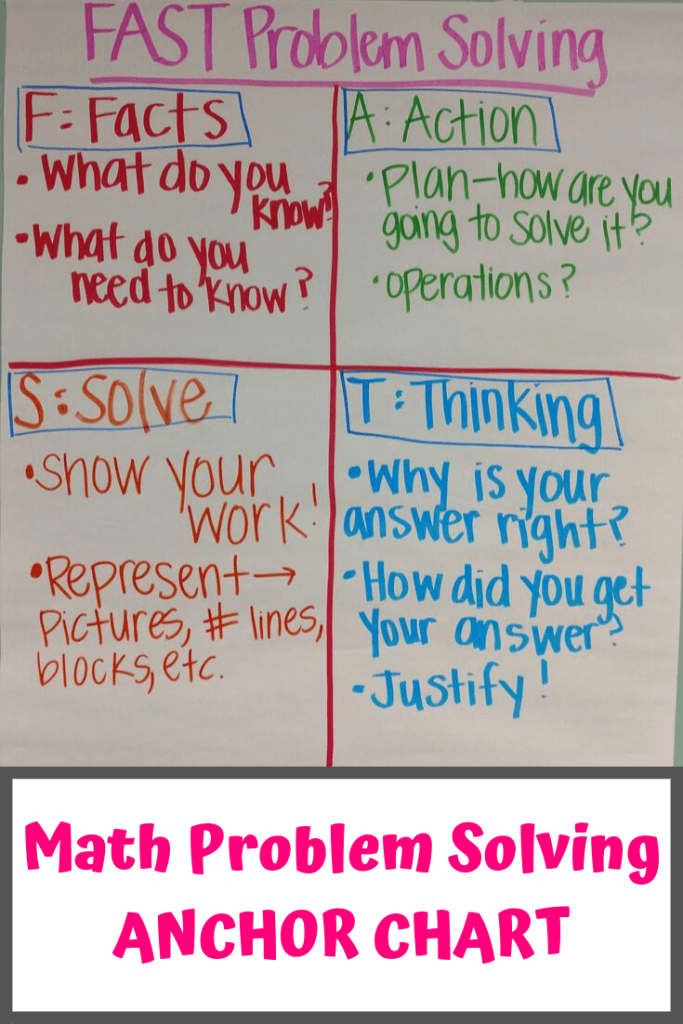FAST Math Problem Solving Anchor Chart: Fast, Action, Solve, Thinking
This post may contain affiliate links, which means I’ll receive a commission if you purchase through my links, at no extra cost to you. Please read full disclosure for more information.
My students have always struggled with word problems. I just can’t understand why, but they do. My school district came up with a problem solving method very similar to thi FAST method. However, I tweaked it a little bit to allow it to fit to the needs of my students. At the beginning, the kids HATED it. “It’s so much writing and I already know the answer!” I tell the kids that math isn’t always about JUST finding the answer. It also isn’t about the writing, but instead about the process. It requires the students to slow down a bit and put their thoughts on paper.
Here’s my FAST Math Anchor Chart:

FAST Problem Solving Stands for Facts, Action, Solve, Thinking
The students solve all word problems using this method. The students draw four quadrants and fill in each section as necessary. We practice this each day with a word problem and the students solve it in their math journals.
F: Facts
This is the section where the students are telling you what they know and what they need to know. I tell the kids it is easiest to draw a t-chart in this section. One side is what they know- the important information. The other side is what they need to know- the question.
A: Action
This is where the students plan on how they are going to solve the problem. I have my students write down which operation or operations they are using, along with the method they are using to solve the problem. (Once again, it’s not about the writing, but the process.)
S: Solve
This is where the students show their work and actually solve the problem. This quadrant is basically their work space. This section allows them to work through the problem and actually come up with a solution.
T: Thinking
Here’s the section my students dislike the most. However, it might be the most important part. This is where the students explain WHY they solved the problem that way or WHY they know they got the answer correct. For this section, I have a list of sentence stems the students can use just to help get them started if they are stuck. A few of the sentence stems are:
“I know my answer is correct because…”
“I found my answer by…”
“My answer is reasonable because…” or “My answer makes sense because..”
Student Impact
FAST problem solving has made a huge difference in my students’ ability to solve math word problems. It definitely took a few weeks (or months) to get them used to it. However, it is definitely worth the effort.
Hope you enjoyed reading a little more about FAST math problem solving! I’d love if you’d let me know any other problem solving methods you use. And if you are interested in other teaching ideas, do visit our teaching page.
